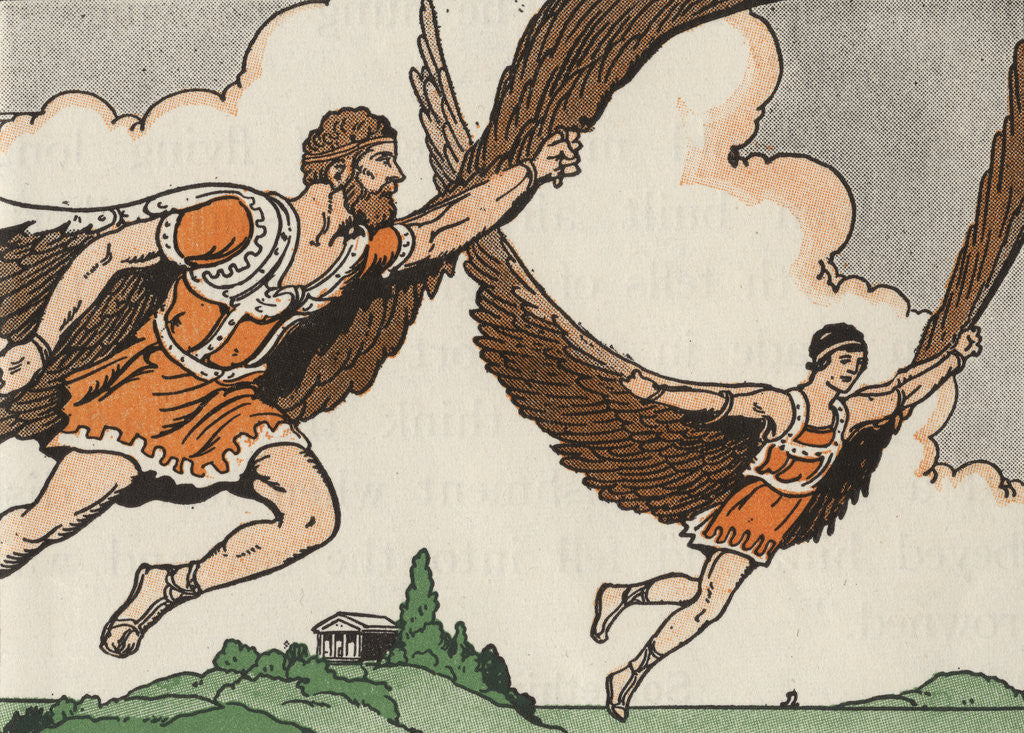
Dædalus, a descendant of Erechtheus, was an Athenian architect, sculptor, and mechanician. He was the first to introduce the art of sculpture in its higher development, for before his time statues were merely rude representations, having the limbs altogether undefined.
But great as was his genius, still greater was his vanity, and he could brook no rival. Now his nephew and pupil, Talus, exhibited great talent, having in- vented both the saw and the compass, and Dædalus, fearing lest he might over- shadow his own fame, secretly killed him by throwing him down from the citadel of Pallas-Athene. The murder being discovered, Dædalus was sum- moned before the court of the Areopagus and condemned to death; but he made his escape to the island of Crete, where he was received by king Minos in a manner worthy of his great reputation.
Dædalus constructed for the king the world-renowned labyrinth, which was an immense building, full of intricate passages, intersecting each other in such a manner, that even Dædalus himself is said, upon one occasion, to have nearly lost his way in it; and it was in this building the king placed the Minotaur, a monster with the head and shoulders of a bull and the body of a man.
In the course of time the great artist became weary of his long exile, more especially as the king, under the guise of friendship, kept him almost a prisoner.
He therefore resolved to make his escape, and for this purpose ingeniously contrived wings for himself and his young son Icarus, whom he diligently trained how to use them. Having awaited a favourable opportunity, father and son commenced their flight, and were well on their way when Icarus, pleased with the novel sensation, forgot altogether his father’s oft-repeated injunction not to approach too near the sun. The consequence was that the wax, by means of which his wings were attached, melted, and he fell into the sea and was drowned. The body of the unfortunate Icarus was washed up by the tide, and was buried by the bereaved father on an island which he called after his son, Icaria.
After this sad event, Dædalus winged his flight to the island of Sicily, where he met with a kind welcome from king Cocalus, for whom he constructed several important public works. But no sooner did Minos receive the intelligence that his great architect had found an asylum with Cocalus than he sailed over to Sicily with a large army, and sent messengers to the Sicilian king demanding the surrender of his guest. Cocalus feigned compliance and invited Minos to his palace, where he was treacherously put to death in a warm bath.
The body of their king was brought to Agrigent by the Cretans, where it was buried with great pomp, and over his tomb a temple to Aphrodite was erected.
Dædalus passed the remainder of his life tranquilly in the island of Sicily, where he occupied himself in the construction of various beautiful works of art.
Comments
Post a Comment